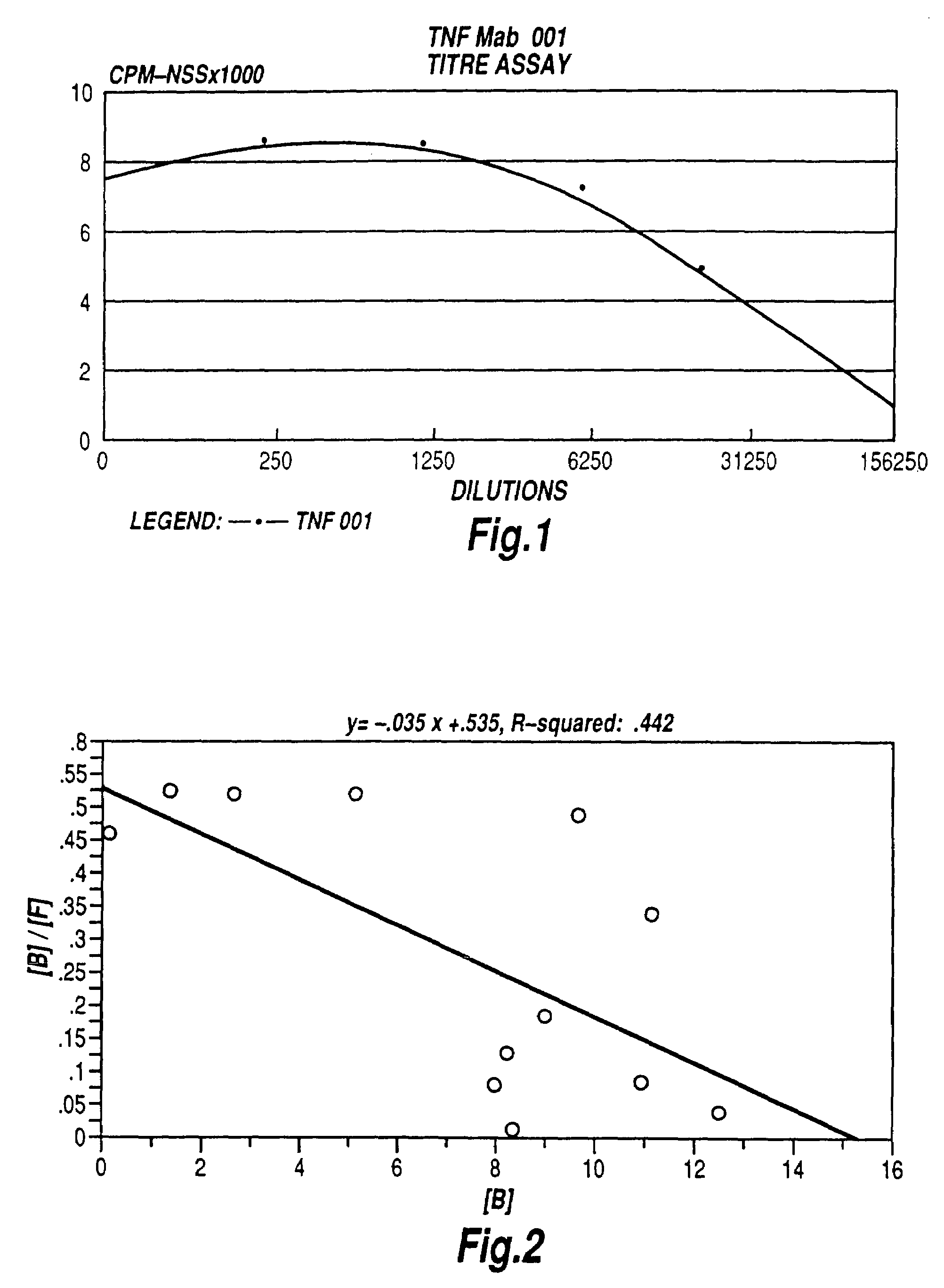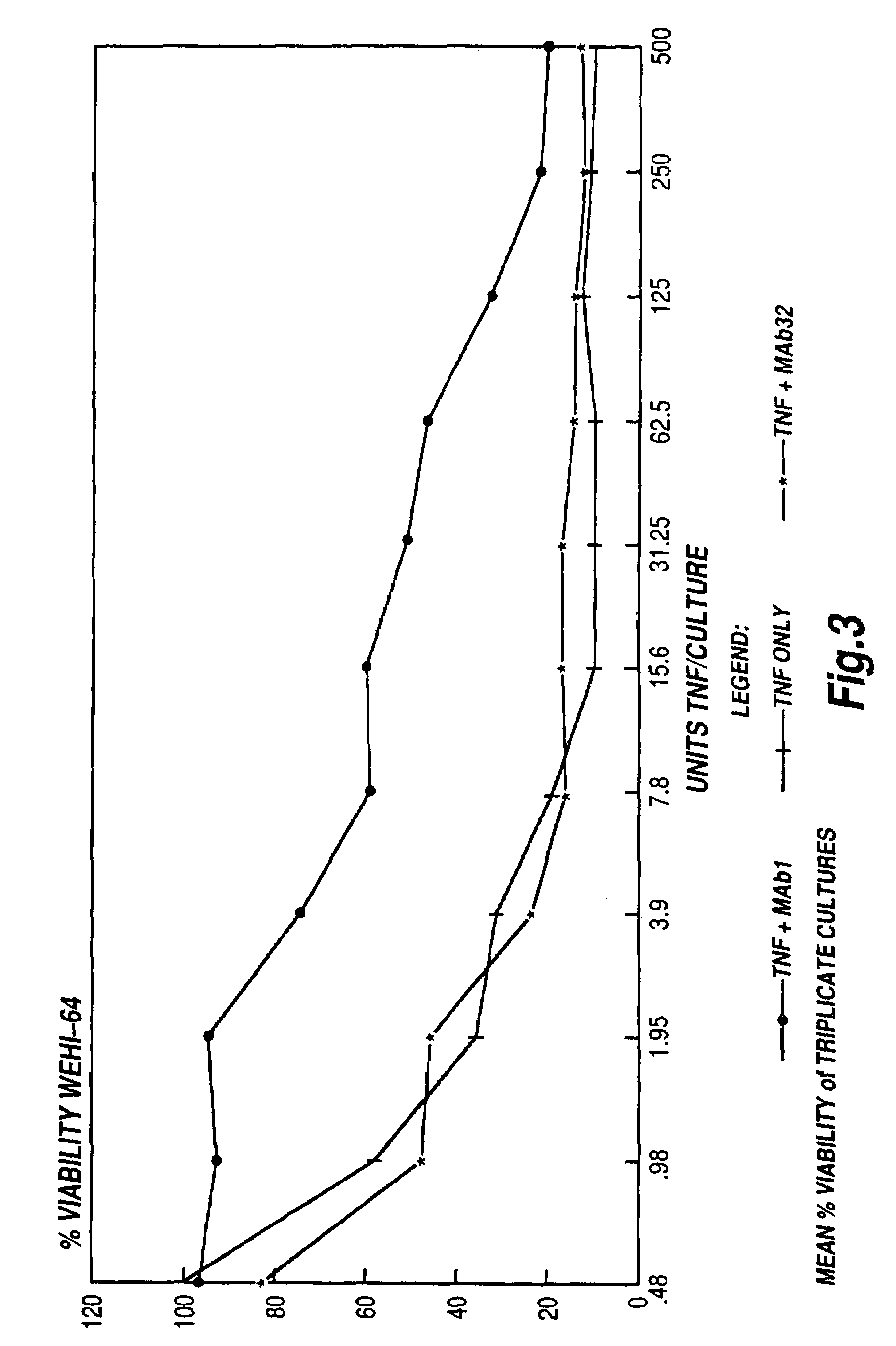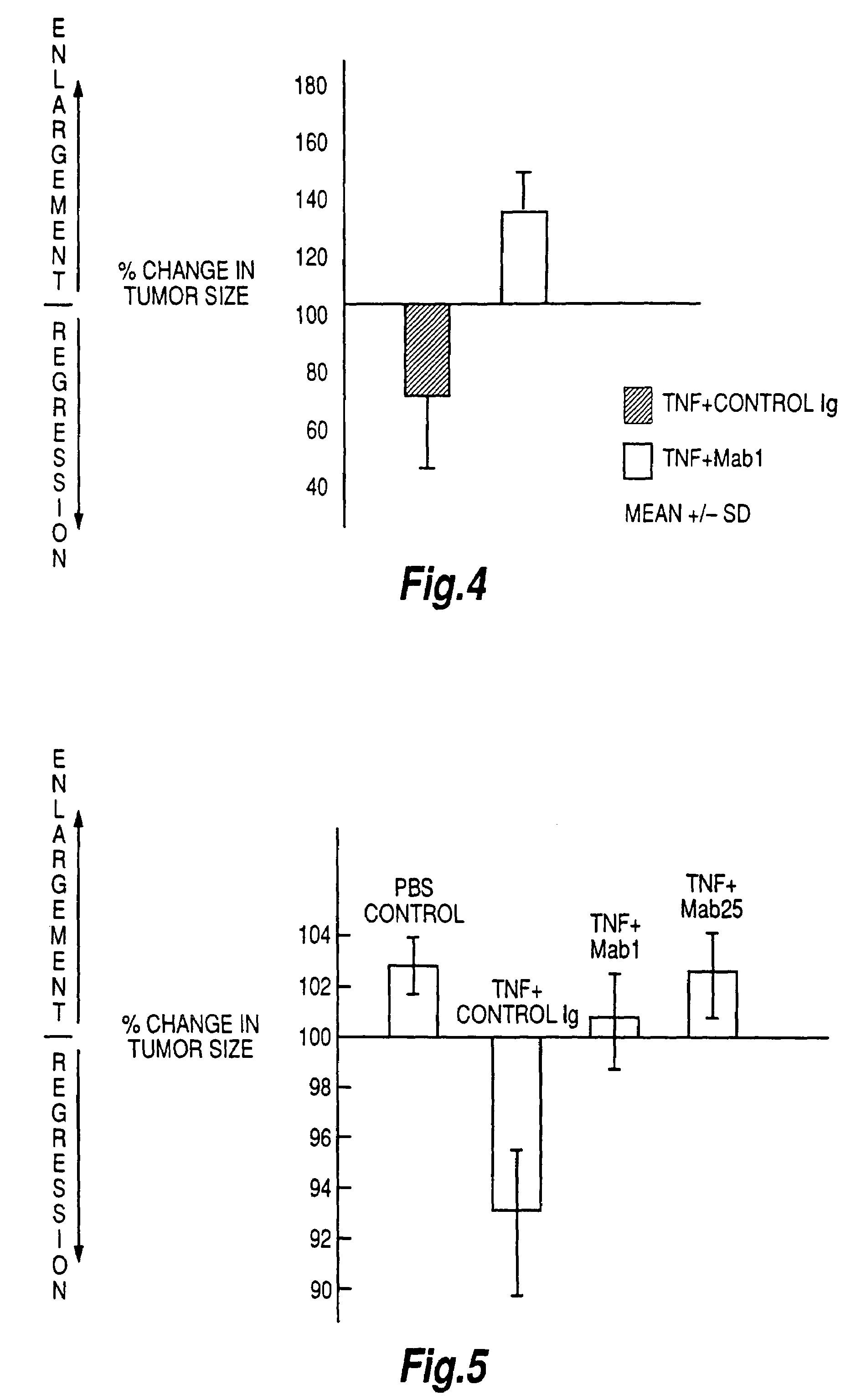Tumour necrosis factor binding ligands
a technology of tumor necrosis factor and binding ligands, which is applied in the field of ligands, can solve the problems of hepatotoxicity, renal impairment, hypertension, tumor regression, etc., and achieve the effect of enhancing or inhibiting tnf alpha activity
- Summary
- Abstract
- Description
- Claims
- Application Information
AI Technical Summary
Benefits of technology
Problems solved by technology
Method used
Image
Examples
Embodiment Construction
Animals and Tumour Cell Lines
[0108]In all experiments BALB / C female mice aged 10-12 weeks obtained from the CSIRO animal facility were used. Meth A solid tumour and Meth A ascites tumour cell lines were obtained from the laboratory of Dr. Lloyd J. Old (Sloan Kettering Cancer Centre) and the WEHI-164 fibrosarcoma line was obtained from Dr. Geeta Chauhdri (John Curtin School of Medical Research, Australian National University).
Fusions and Production of Hybridomas
[0109]Mice were immunised with 10 ug human recombinant TNF intra-peritoneally in Freund's complete adjuvant. One month later 10 ug TNF in Freund's incomplete adjuvant was administered. Six weeks later and four days prior to fusion selected mice were boosted with 10 ug TNF in PBS. Spleen cells from immune mice were fused with the myeloma Sp2 / 0 according to the procedure of Rathjen and Underwood (1986, Mol. Immunol. 23, 441). Cell lines found to secrete anti-TNF antibodies by radioimmunoassay were subcloned by limiting dilution ...
PUM
| Property | Measurement | Unit |
|---|---|---|
| temperature | aaaaa | aaaaa |
| temperature | aaaaa | aaaaa |
| pH | aaaaa | aaaaa |
Abstract
Description
Claims
Application Information
 Login to View More
Login to View More - R&D
- Intellectual Property
- Life Sciences
- Materials
- Tech Scout
- Unparalleled Data Quality
- Higher Quality Content
- 60% Fewer Hallucinations
Browse by: Latest US Patents, China's latest patents, Technical Efficacy Thesaurus, Application Domain, Technology Topic, Popular Technical Reports.
© 2025 PatSnap. All rights reserved.Legal|Privacy policy|Modern Slavery Act Transparency Statement|Sitemap|About US| Contact US: help@patsnap.com



